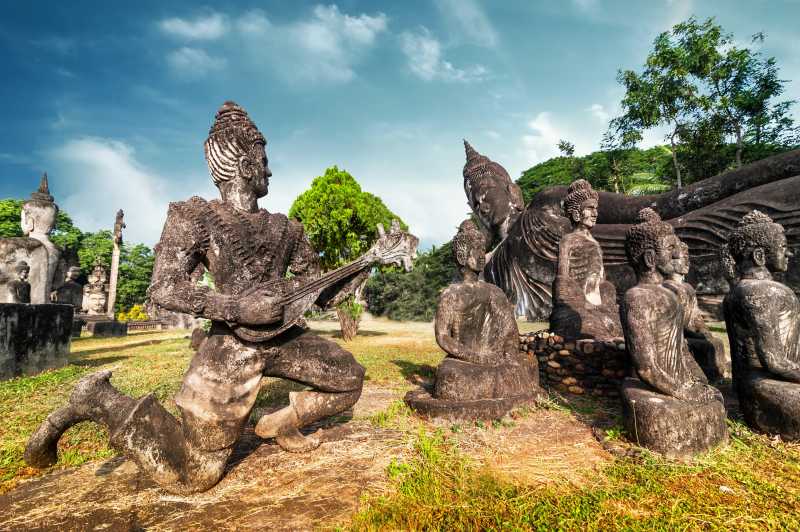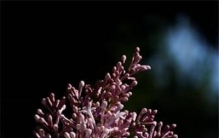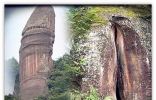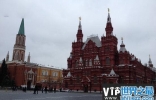认识“相爱相杀”的希腊众神,走进西方文明的源头

1
We will have achieved much for the study of aesthetics when we come, not merely to a logical understanding, but also to the immediately certain apprehension of the fact that the further development of art is bound up with the duality of the Apollonian and the Dionysian, just as reproduction depends upon the duality of the sexes, their continuing strife and only periodically occurring reconciliation. We take these names from the Greeks who gave a clear voice to the profound secret teachings of their contemplative art, not in ideas, but in the powerfully clear forms of their divine world.
我们要想在审美研究方面取得卓越的成就,就得在逻辑上和直觉上同时认识到这么一个事实,即艺术要想得到进一步的发展,离不开日神阿波罗精神和酒神狄奥尼索斯精神的二元性。这如同繁衍一样,需要雌雄两性。两者永远持续不断地斗争,间或偶尔和解,我们从希腊人那里取了这两个名字,是因为二者能清晰地阐释出冥想艺术中深奥的秘籍。这点不仅仅表现在观念上,而且还表现在形式上,他们在各自的神圣世界里,表现出两个截然不同的风格。
With those two gods of art, Apollo and Dionysus, we link our recognition that in the Greek world there exists a huge contrast, in origins and purposes, between visual (plastic) arts, the Apollonian, and the non-visual art of music, the Dionysian. Both very different drives go hand in hand, for the most part in open conflict with each other and simultaneously provoking each other all the time to new and more powerful offspring, in order to perpetuate for themselves the contest of opposites which the common word “Art” only seems to bridge, until they finally, through a marvelous metaphysical act, seem to pair up with each other and, as this pair, produce Attic tragedy, just as much a Dionysian as an Apollonian work of art.
有了阿波罗和狄奥尼索斯这两个艺术之神,我们可以认识到,希腊世界里存在着一对对立体——日神阿波罗精神,代表视觉(造型)艺术,和酒神狄奥尼索斯,代表音乐这个非视觉的艺术。它们无论在起源还是宗旨方面都存在着巨大的反差。两股相悖的驱动力携手共进,在大多数的情况下公开对决。与此同时,彼此又一直在互相刺激,直至新的、更强大的下一代诞生。这对矛盾对立体在对抗中生息永存,好像只有它们的共同词汇“艺术”才能在它们之间搭起桥梁。最终,通过某个奇迹般的形而上的行为,两者似乎融合了起来。古希腊雅典派的悲剧就是这样,通过二元的对立关系产生的,日神精神和酒神精神的艺术品无不都是出自这样的道理。
In order to get closer to these two instinctual drives, let us think of them next as the separate artistic worlds of dreams and of intoxication, physiological phenomena between which we can observe an opposition corresponding to the one between the Apollonian and the Dionysian.
为了更好地明白这两股本能驱动力的内涵,让我们把这两股动力看作为两种不同的艺术境界:梦境与醉境。通知这两种生理现象的差异,我们可以在日神精神和酒神精神之间看到相应的差异关系。
According to the ideas of Lucretius, the marvelous divine shapes first appeared to the mind of man in a dream. It was in a dream that the great artist saw the delightful anatomy of superhuman existence, and the Hellenic poet, questioned about the secrets of poetic creativity, would have recalled his dreams and given an explanation exactly similar to the one Hans Sachs provides in Die Meistersinger.
根据卢克莱修的观点,奇妙的神形首先是通过梦境出现在人们的心灵。伟大的雕刻家就是在梦中看到那些让他兴奋不已的超人灵物的身躯解剖构造的。如果你问古希腊的诗人作诗的秘诀是什么,他会回忆他曾经做过的梦,他所给的解释一定与汉斯·萨克斯在他的诗《名歌手》里所给的一模一样:
My friend, that is precisely the poet's work—
我的朋友,这正是诗人的工作——
To figure out his dreams, mark them down.
解读他的梦想,把它写下来。
Believe me, the truest illusion of mankind
相信我,人类最真实的幻觉
Is revealed to him in dreams:
在梦里向他透露;
All poetic art and poeticizing
所有的诗歌艺术与诗意
Is nothing but interpreting true dreams.
都只是解释真正的梦想。
The beautiful appearance of the world of dreams, in whose creation each man is a complete artist, is the condition of all plastic art, indeed, as we shall see, an important half of poetry. We enjoy the form with an immediate understanding, all shapes speak to us, nothing is indifferent and unnecessary.
梦境的美丽外表,是一切造型艺术的先决条件。谁用它来创作,谁就能够成为完美的艺术家。正如下面我们会看到的那样,作诗也不例外,漂亮的外观占据诗歌的半壁江山。我们对某个外形一眼能够看懂,就是因为外形是不言而喻的,它的身上没有可有可无、无关紧要的东西。
For all the very intense life of these dream realities, we nevertheless have the thoroughly disagreeable sense of their illusory quality. At least that is my experience. For their frequency, even normality, I can point to many witnesses and the utterances of poets. Even the philosophical man has the presentiment that this reality in which we live and have our being is an illusion, that under it lies hidden a second quite different reality. And Schopenhauer specifically designates as the trademark of philosophical talent the ability to recognize at certain times that human beings and all things are mere phantoms or dream pictures.
尽管梦中的现实生活非常紧张,然而我们仍然能够体会到梦中现实的假象特征,感觉到非常的不舒服。至少,那是我的体验。由于这些现象频繁出现,甚至已经常态化了,所以我可以举出许多的例子和诗人的话语来作为证据。甚至哲学家也有同感,那就是:在那样的现实里,我们的生活和存在是一种幻觉,在这个现实下面还藏有一个完全不同的现实。叔本华特别指出:如果某个人在某些特定的时候,能够把人和所有的东西都看作为仅仅是幻影和梦景,这就标志此人一定具有哲人的才能。
Now, just as the philosopher behaves in relation to the reality of existence, so the artistically excitable man behaves in relation to the reality of dreams. He looks at them precisely and with pleasure, for from these pictures he fashions his interpretation of life; from these events he rehearses his life. This is not merely a case of agreeable and friendly images which he experiences with a complete understanding. They also include what is serious, cloudy, sad, dark, sudden scruples, teasing accidents, nervous expectations, in short, the entire “divine comedy” of life, including the Inferno—all this moves past him, not just like a shadow play, for he lives and suffers in the midst of these scenes, yet not without that fleeting sensation of illusion. And perhaps several people remember, like me, amid the dangers and terrors of a dream, successfully cheering themselves up by shouting: “It is a dream! I want to dream it some more!” I have also heard accounts of some people who had the ability to set out the causal connection of one and the same dream over three or more consecutive nights. These facts are clear evidence showing that our innermost beings, the secret underground in all of us, experiences its dreams with deep enjoyment, as a delightful necessity.
所以,正如哲学家处理的是与生存现实之间的关系,艺术细胞发达的人处理的则是与梦境现实之间的关系。他对这些梦境的现实观察仔细,怡然自得,因为从这些画面中,他能够产生自己对生活的理解,从这些事件中预演到自己的人生。他所体验的意象不总是愉悦、友好,也不是他完全能够理解的。这些意象里必定有严峻、混浊、悲哀、黑暗、瞬间的迟疑、愚人的事件以及令人着急的期待。总之,人生的“神曲”整部剧,包含其中的“地狱篇”,——从他身边走过。这可不像皮影戏啊,因为他就身在其中,生活着,苦恼着,完全意识不到幻觉会转瞬即逝。也许有那么一些人跟我一样,依稀记得,曾经我们在梦里掉进了危险和恐怖之中,一旦我们成功地逃脱,我们就会欢呼雀跃:“这是一场梦!我索性继续做下去吧!”我也曾经听有人说过,他可以连续三四个晚上做一个前后有因果关联的梦,或做同样一个梦。这些事实都清晰地证明了我们的内心是存在的,即我们大家都有心灵深处。而心灵深处在体验梦境的时候,总是带有深深的愉悦感,这就是快感的必然性。
The Greeks expressed this joyful necessity of the dream experience in their god Apollo, who, as god of all the plastic arts, is at the same time the god of prophecy. In accordance with the root meaning of his association with brightness, he is the god of light. He also rules over the beautiful appearance of the inner fantasy world. The higher truth, the perfection of this condition in contrast to the sketchy understanding of our daily reality, as well as the deep consciousness of a healing and helping nature in sleep and dreaming, is the symbolic analogy to the capacity to prophesy the truth, as well as to art in general, through which life is made possible and worth living. But also that delicate line which the dream image may not cross so as to work its effect pathologically (otherwise the illusion would deceive us as crude reality)—that line must not be absent from the image of Apollo, that boundary of moderation, that freedom from more ecstatic excitement, that fully calm wisdom of the god of images. His eye must be sun-like, in keeping with his origin. Even when he is angry and gazes with displeasure, the consecration of the beautiful illusion rests on him.
希腊人在阿波罗神身上找到过梦境体验的快感必然性。阿波罗是所有造型艺术的神,但同时也是预知之神。阿波罗,就其词源而言,是“光明”的意思,因此他被称为“日神”。他还掌管我们内心幻觉世界里的美丽外观。更高级的事实发现(他无所不能,这比我们人类对日常生活只能有着粗略的认识要强的多,尽管我们人类对睡眠和做梦的愈合和帮助功能已有了深刻的认识),是预知能力的象征比喻,即所有艺术有着预知能力的功效。正是这种预言性才使我们的生活变得可能,才使我们觉得值得过下去。当然,梦境里有一道敏感的红线,是不可逾越的;如果逾越了,后果就不堪设想(否则,我们就会被幻觉世界所蒙骗,误认为是残酷的现实)——阿波罗的形象中少不了这道红线,这个红线就是适中、不狂喜和智慧般的冷静,总之他具有一个神该有的一切形象。他的目光必须像阳光,保持与他名称来源一致。即使在他勃然大怒或神色沮丧的时候,也要有给人一种美丽的幻觉的感受。
And so one may verify (in an eccentric way) what Schopenhauer says of the man trapped in the veil of Maja: “As on the stormy sea which extends without limit on all sides, howling mountainous waves rise up and sink and a sailor sits in a row boat, trusting the weak craft, so, in the midst of a world of torments, the solitary man sits peacefully, supported by and trusting in the principium individuationis (the principle of individuality)” (World as Will and Idea, Vol. I, p. 416). Yes, we could say of Apollo that the imperturbable trust in that principle and the calm sitting still of the man conscious of it attained its loftiest expression in him, and we may even designate Apollo himself as the marvelous divine image of the principium individuationis, from whose gestures and gaze all the joy and wisdom of illusion, together with its beauty, speak to us.
所以,有人想知道(用一种奇特的方式)叔本华是如何描述一个坠入“玛雅(幻)”帷帐的人的:“在波涛汹涌、一望无际的海面上,咆哮的巨浪此起彼伏。一个水手,孤独地坐在划船上,相信脆弱的小船能抵御惊涛骇浪,于是他平静地坐在那里,相信‘个性原则’可以支撑他。”(《作为意志和表象的世界》卷I,第416页)其实我们可以说,信仰那个原则从而达到安心静坐的这一现象,在日神阿波罗身上得到了最崇高的表现。我们甚至可以把阿波罗本人视作为“个性原则”的神圣典范。我们从他的动作和目光中可以看出,他在幻景中体会到了快乐和智慧,连同它的美丽。
In the same place Schopenhauer also described for us the monstrous horror which seizes a man when he suddenly doubts his ways of comprehending illusion, when the sense of a foundation, in any one of its forms, appears to suffer a breakdown. If we add to this horror the ecstatic rapture, which rises up out of the same collapse of the principium individuationis from the innermost depths of human beings, yes, from the innermost depths of nature, then we have a glimpse into the essence of the Dionysian, which is presented to us most closely through the analogy to intoxication.
在同一本书里,叔本华还给我们描述了这么一个例子,当一个人突然怀疑自己对幻觉的理解思路出了问题的时候,或当他感觉到某个定理以某种方式似乎在动摇的时候,他会惶恐不安。假如我们在惶恐之外,能添加一份狂喜,而这份狂喜同样是来自于人的心底深处,是的,就是自然的最深处,那么我们就可以洞察到酒神精神的精髓。用醉境来比喻酒神精神的精髓是最为贴切不过了。
Either through the influence of narcotic drink, of which all primitive men and peoples speak, or through the powerful coming on of spring, which drives joyfully through all of nature, that Dionysian excitement arises. As its power increases, the subjective fades into complete forgetfulness of self. In the German Middle Ages under the same power of Dionysus constantly growing hordes waltzed from place to place, singing and dancing. In that St. John's and St. Vitus's dancing we recognize the Bacchic chorus of the Greeks once again, and its precursors in Asia Minor, right back to Babylon and the orgiastic Sacaea (a riotous Babylonian festival).
所有的原始人和所有部落的人都说:酒神风格的激情不是被醇香的酒精作用所唤醒,就是被从远方一路欢声笑语、呼呼而来的春天所唤醒。随着激情的越发高涨,主观意识逐渐褪去,直至最后化为全然忘我。在德国中世纪,同样受到酒神精神的影响,不断出现歌舞队。他们像跳华尔兹一样,到处巡演,载歌载舞。在圣约翰和圣维托的舞蹈中,我们再次看到古希腊醉酒式的合唱。这种形式的表演早期的时候是在小亚细亚的,后来回到巴比伦和狂欢的萨刻亚节(一个欢腾喧闹的巴比伦节日)上了。
There are men who, from a lack of experience or out of apathy, turn mockingly away from such phenomena as from a “sickness of the people,” with a sense of their own health and filled with pity. These poor people naturally do not have any sense of how deathly and ghost-like this very “Health” of theirs sounds, when the glowing life of the Dionysian throng roars past them. Under the magic of the Dionysian, not only does the bond between man and man lock itself in place once more, but also nature itself, no matter how alienated, hostile, or subjugated, rejoices again in her festival of reconciliation with her prodigal son, man. The earth freely offers up her gifts, and the beasts of prey from the rocks and the desert approach in peace. The wagon of Dionysus is covered with flowers and wreaths under his yolk stride panthers and tigers.
有些人,不是出于经验的匮乏就是出于情感的淡漠,自以为心灵健康,对这种现象深表遗憾,甚至是嗤之以鼻,讥讽为“民间的病态”。但是这些可怜虫自然意识不到,他们所谓的“心灵健康”,与酒神歌队的朝气蓬勃相比,显得多么得死气沉沉、形同幽灵啊!在酒神精神的魔力作用下,人与人之间的团结再次得以巩固,就连那个被疏远、被敌视、被屈服的大自然也再次庆贺自己能够与她的浪子——人类言归于好。大地慷慨地献出她的礼物,猛兽们跳过岩石、跨过沙漠乖乖地走了过来。酒神的战车装饰着百卉和花环,黑豹和老虎在车轭下大踏步地往前走。
If someone were to transform Beethoven's Ode to Joy into a painting and not restrain his imagination when millions of people sink dramatically into the dust, then we could come close to the Dionysian. Now is the slave a free man, now all the stiff, hostile barriers break apart, those things which necessity and arbitrary power or “saucy fashion” have established between men. Now, with the gospel of world harmony, every man feels himself not only united with his neighbour, reconciled and fused together, but also as if the veil of Maja had been ripped apart, with only scraps fluttering around before the mysterious original unity. Singing and dancing, man expresses himself as a member of a higher unity. He has forgotten how to walk and talk and is on the verge of flying up into the air as he dances. The enchantment speaks out in his gestures. Just as the animals speak and the earth gives milk and honey, so now something supernatural echoes out of him. He feels himself a god. He now moves in a lofty ecstasy, as he saw the gods move in his dream. The man is no longer an artist. He has become a work of art. The artistic power of all of nature, the rhapsodic satisfaction of the primordial unity, reveals itself here in the intoxicated performance. The finest clay, the most expensive marble—man—is here worked and chiseled, and the cry of the Eleusinian mysteries rings out to the chisel blows of the Dionysian world artist: “Do you fall down, you millions? World, do you have a sense of your creator?”
如果有谁愿意把贝多芬的《欢乐颂》绘成油画,同时也不吝啬自己的想象力,想象出成千上万的人如何伏地膜拜的话,那么我们就能够更加深刻地体会到什么叫做酒神精神了。此时,奴隶变成了自由身;此时,所有的僵化、敌对的壁垒——繁文缛节、强权势力和“不雅的风尚”统统被打破。此时,在世界大同的福音中,人不但感到自己与邻人团结了、和解了、融洽了,而且还感到“幻”的帷帐似乎已经揭去,只留下几片残叶在神秘的“太一”面前飘零。人在载歌载舞,自豪于自己成为更加高级的社团成员;他陶然忘步、混然忘言;他翩跹起舞,意欲凌空飞去!他的投足之间到处散发着无穷的魅力。现在,正如动物能开口说话,大地能流出牛奶与蜂蜜一样,所以超自然也呼应人。人觉得自己是神灵。见到众神踯躅于自己的梦境中,他觉得自己也徘徊在一个无比高尚的癫狂之殿。他不再是一个艺术家;俨然是一件艺术品。一切自然的艺术才能,即对原始太一狂热的满足感统统在这个如痴如醉的表演中得到淋漓尽致的展示。人——这块精细的粘土、最昂贵的大理石在这里被捏制、被雕琢。秘仪上的教徒,应和着这位宇宙酒神艺术大师的凿击声,在那里呐喊:“芸芸众生,你们都倒下了吗?大地啊,你感受到你的造物主了吗?”
大家都在看
-
游山玩水赏云海 矗立北京东边最高处的森林王国 中国网7月9日讯 雾灵山是燕山山脉的主峰,被称为“京东之首、燕山之最”。这使雾灵山在燕山地区独具特色,独领风骚。雾灵山地理位置独特,位于我国暖温带北部,既处于暖温带落叶阔叶林带向温带针阔混交林带的过渡地 ... 自然之最12-13
-
白鹿的奇妙时刻:沉醉日照金山,感悟自然之美 《白鹿与日照金山的璀璨邂逅》。说说白鹿与日照金山的故事!1. 有个叫白鹿的俊姑娘,长得可水灵,眼睛大大的笑起来像春天里开得最艳的花,她平日忙着拍戏到处跑,有一回来到一个有高高大山的神奇地方,山高得像要碰 ... 自然之最10-30
-
湖州漂流之旅:激流勇进,畅享自然之魅 湖州漂流之旅:激流勇进,畅享自然之魅。1. 在湖州,一场惊心动魄又充满乐趣的漂流体验正悄然等待着你的探索。这里山川如诗如画,水流奔腾不息,仿佛是大自然特意为你准备的一场冒险盛宴。2. 深夜当你穿上救生衣,踏 ... 自然之最10-30
-
秋天最有仪式感的9件小事,做过5件,就很幸福 当空气中飘荡着似有若无的桂花香气,杂货铺里堆着新鲜多汁的黄梨,月色一日比一日清寒,雨声从热闹变得沉寂,我们便知道,秋天已经来了。四季轮转,秋意渐起,季节的转换总能给我们的生活带来新的色彩。穿着暖暖的卫 ... 自然之最10-30
-
海外华文媒体走进江西庐山 感受自然与人文之美 10月16日至17日,2024海外华文媒体江西行采访团登上闻名中外的江西庐山,来自世界五大洲18个国家和地区的20余位海外华文媒体人先后探访了庐山会议旧址、庐山抗战博物馆、庐山锦绣谷、美庐别墅、含鄱口等地,感受“人 ... 自然之最10-30
-
米芾书法的“平淡”与“自然” 随着近两年博物馆爆火,越来越多年轻人排队去看书法真迹。抄经拓碑、临帖练字也成了新的热门休闲活动。一方面,日常生活中我们大量依赖输入法用电子设备沟通,常常提笔忘字;但另一方面,每当有幸看到名家的书法真迹 ... 自然之最10-30
-
2018全国适合养老的20座城市,丽江竟然排第一 当你老了是想隐居山村还是在大城市享受?是想呼吸自由的空气还是照顾儿孙?2018刚开始,网上流传中国“最适合养老居住”前二十个城市榜单丽江也出现在这份榜单上!20昆山昆山,地处经济活跃的长江三角洲东端,位于国 ... 自然之最07-25
-
秦岭自然保护地体系知道多少? 科技日报记者 史俊斌 通讯员 杜扶阳这几天,习总书记在陕西考察调研,秦岭因他的到访而再次成为热点受到世界瞩目。那么,秦岭陕西区域内有多少个自然保护区?自然保护地体系情况如何? 远眺西岳华山 杨晓卫 摄“ ... 自然之最07-25
-
自然界的奇迹:揭秘世界之最的十大自然奇观 这次让我们来了解一些自然界中的“世界之最”,它们不仅令人惊叹,还让我们深刻感受到大自然的神奇与伟大。世界上最高的树:加州海岸红杉(Hyperion)加州海岸红杉(Sequoia sempervirens)中的一棵被命名为“Hyperi ... 自然之最05-27
-
吉尼斯之最:世界上最震撼人心的自然奇观! 最高的山峰:珠穆朗玛峰,位于喜马拉雅山脉,是世界上海拔最高的山峰。根据世界吉尼斯记录的测量,珠穆朗玛峰的海拔高度为8848.86米。珠穆朗玛峰最长的河流:亚马逊河,源头位于秘鲁境内,是世界最长的河流。根据世 ... 自然之最04-11
相关文章
- 揭秘自然之最——玻璃杯中的奇幻世界
- 2018全国适合养老的20座城市,丽江竟然排第一
- 秦岭自然保护地体系知道多少?
- 地球上奇迹最多的地带
- 自然界的奇迹:揭秘世界之最的十大自然奇观
- 吉尼斯之最:世界上最震撼人心的自然奇观!
- 地球上至今还活着的最大生物是什么?无法遏制,它仍在不断狂长
- 世界十大自然之最#感受大自然的气息和美景
- 伊瓜苏瀑布:自然奇观之最
- 重磅!我国这一新发现,刷新“自然界之最”!
- 除了地坑院,你知道河南的三门峡有多少全省以及全国之最吗
- 中国之最之自然景观,你都知道哪些?还有哪些是我不知道的呢?
- 中国之最:白水河是世界最大瀑布群,壮观场面令人惊叹!
- 世界上最深的海沟:马里亚纳海沟,最深处达11034米
- 大语文学习:中国自然环境之最
- 中国自然之最
- 地理常识之世界山川湖海之最
- 探访东莞绿道之最,领略自然之美
- 世界上最大的自然铜,如今已有10亿岁重达26吨
- 中国十大地缝大峡谷,大自然的鬼斧神工
热门阅读
-
张译和张铎,你真的能分清楚吗? 07-13
-
三年自然灾害毁灭了多少的东西,实属可怕 07-13
-
丹霞山阴阳石酷似男女生殖器,羞涩的人真的看不下去 07-13
-
世界上最高的十大山峰,珠穆朗玛峰稳居第一 07-13
-
俄罗斯十大城市排名:莫斯科第一,圣彼得堡第二 08-01
-
世界十大最缺水的国家排行榜,索马里位列第一 08-12


















